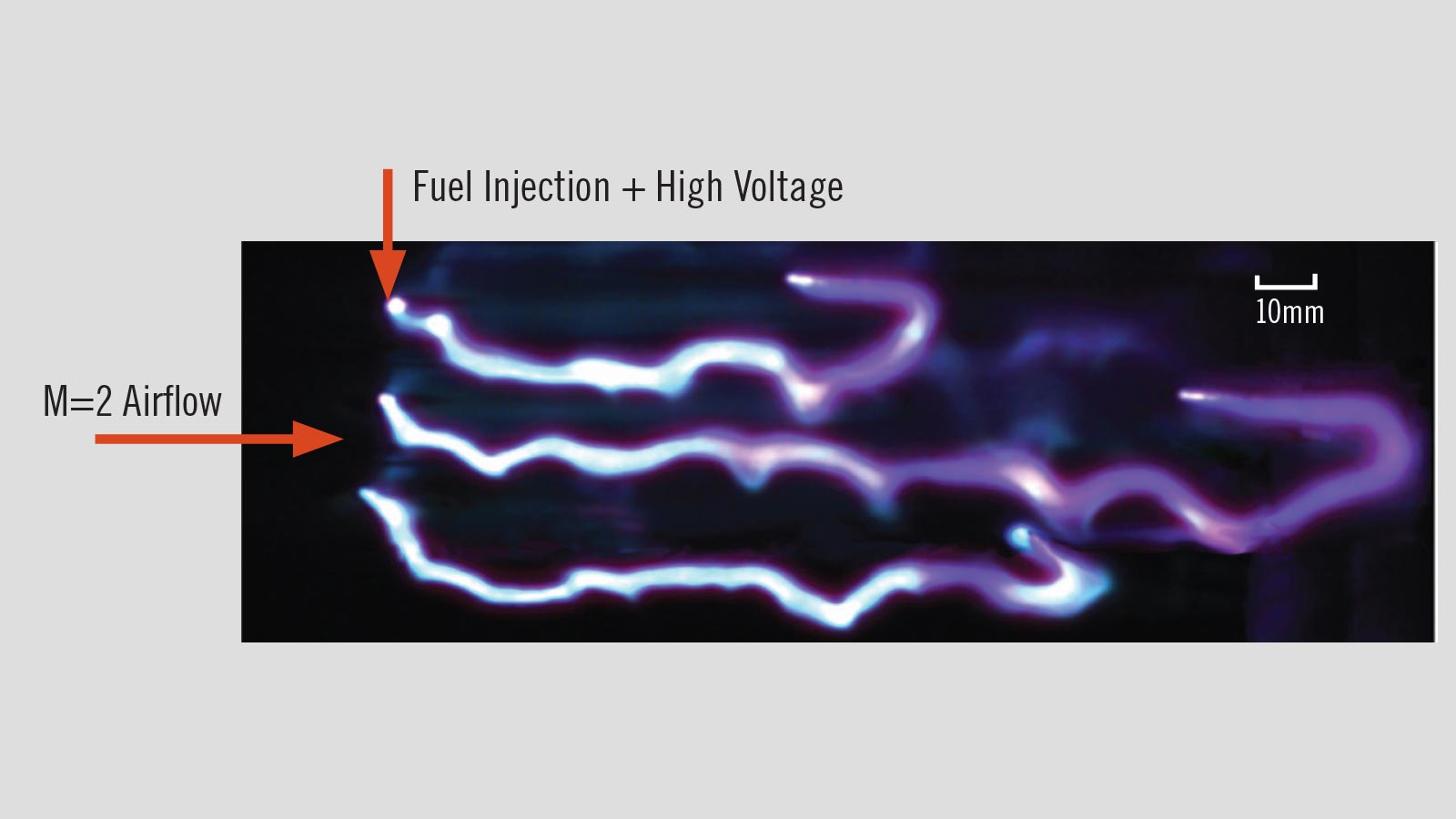Stay Up to Date
Submit your email address to receive the latest industry and Aerospace America news.
The Plasmadynamics and Lasers Technical Committee works to apply the physical properties and dynamic behavior of plasmas to aeronautics, astronautics and energy.
Notable advancements were made in the area of plasma diagnostics this year. Researchers at Princeton University have been pioneering the development of electric-field-induced second harmonic generation, or E-FISH, for spatially and temporally resolved measurements of rapidly time-varying electric fields. The researchers achieved one-dimensional, spatially resolved measurements of nanosecond-pulse-generated ionization waves with a temporal resolution of 100 picoseconds and spatial resolution lower than 50 microns. Between the end of last year and June, researchers at Ohio State University applied E-FISH to measure electric fields in dielectric barrier discharge plasma flow actuators powered by alternating current and nanosecond pulse waveforms, as well as in atmospheric pressure flames enhanced by nanosecond pulse and alternating current discharges. Purdue University and Princeton University researchers in February reported the first direct measurement of absolute plasma electron numbers generated in multiphoton ionization, or MPI, of air using a microwave scattering technique; this offers decreased uncertainty in determining MPI cross-sections and photoionization rates.
In the area of plasma-assisted ignition and combustion, scientists from the University of Notre Dame published work in May on long filamentary plasmas called Plasma-Injection Modules to realize fuel ignition and improve combustion efficiency under supersonic conditions. An important feature of this approach is the self-localization of the plasma in the shear layer between the fuel and oxidizer, enhancing mixing and promoting chemical reactions. In August, researchers at Xi’an Jiaotong University reported on a multichannel plasma ignition method that can extend the ignition range for combustors operating under low-temperature, low-pressure and high-speed conditions.
Representing a significant advancement for plasma-assisted combustion, or PAC, modeling capabilities, Princeton’s PAC chemical mechanism was submitted for publication in July, completed with direct measurements of quenching rate coefficients of electronically excited nitrogen and nitrogen ion states by different hydrocarbons. Princeton researchers built and tested the kinetic model of heat release dynamics in nanosecond-pulsed plasma afterglow, including ozone production dynamics.
Novel plasma flow control devices were also demonstrated this year. In April, Iowa State researchers reported on alternating current and nanosecond pulsed dielectric barrier discharges, or NS-DBDs, as anti-icing and de-icing mechanisms on airfoils. NS-DBDs exhibited superior performance compared with conventional heater methods using the same power input. Princeton University researchers also applied NS-DBDs to improve static and dynamic stall characteristics in rotorcraft and, in August, reported up to 40 percent increased lift force in 20 to 70 meters per second flows for angle-of-attack up to 32 degrees. In June, University of Illinois and CU Aerospace researchers reported further development of cyclotronic arc-plasma actuators, or CAPAs, devices that produce Lorentz forcing on an arc-filament formed between coaxial electrodes within a strong magnetic field, to induce vortices in boundary layer flows. The compact devices produced more than 6,000-revolutions-per-minute rotation rates with 5-10 m/s plasma filament speeds; the Illinois-CUA team plans to demonstrate CAPAs as low-drag on-demand vortex generators on drones in 2019.
In May, Princeton University researchers reported the first demonstration of the backward lasing from atomic argon in atmospheric pressure air. In the process, air containing 0.8 percent argon was optically pumped via three-photon resonant excitation at 262 nanometers, producing a backward-propagating 1,409 nm emission returning along the pump beam path. Lasing occurred within tens of picoseconds following the pump and was obtained at distances ranging from 20 centimeters to 2 meters. A 100 femtosecond laser provided high intensity to drive the process, with efficient pumping due to the overlapping broadband spectral components of the pumping pulse compensating each other to achieve narrow-linewidth excitation of the upper level.
Editor’s note: Sally Bane works at Purdue University, and Joseph W. Zimmerman works at CU Aerospace.
Image: Three plasma injection modules operating in Mach 2 airflow in a supersonic test facility at the University of Notre Dame. The electrical discharge originates from the fuel injection nozzle and follows the fuel jet downstream, producing enhanced mixing in the shear layer and increasing the plasma-fuel interaction time. Credit: University of Notre Dame
Stay Up to Date
Submit your email address to receive the latest industry and Aerospace America news.




